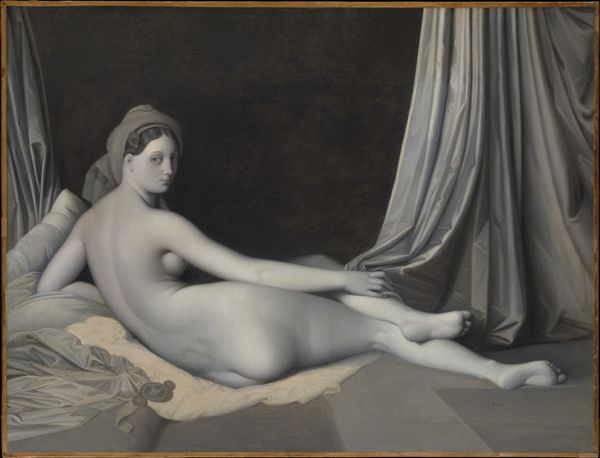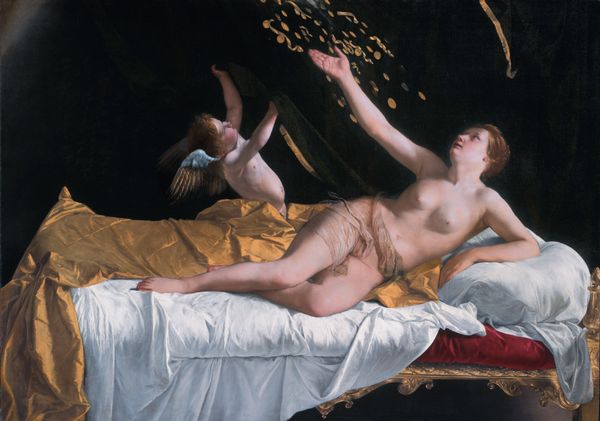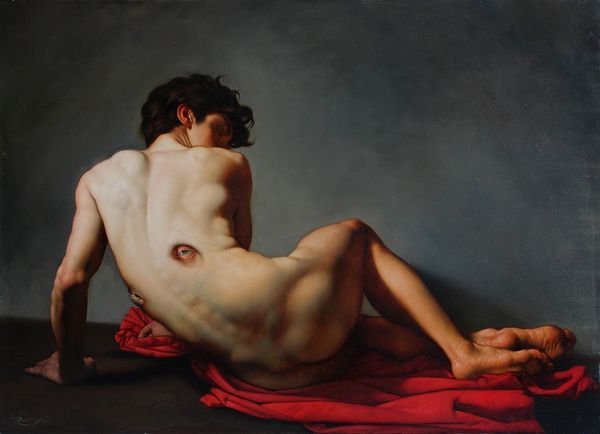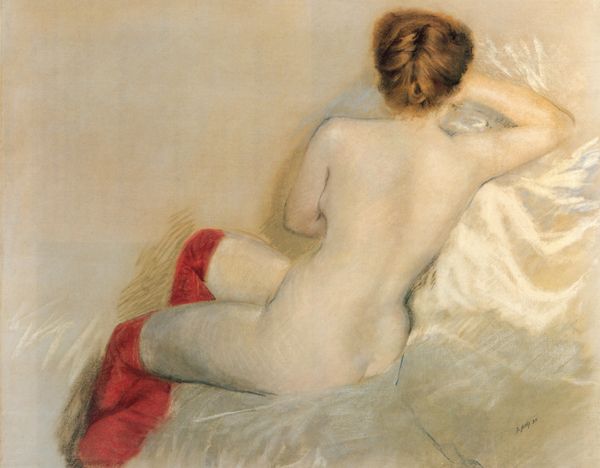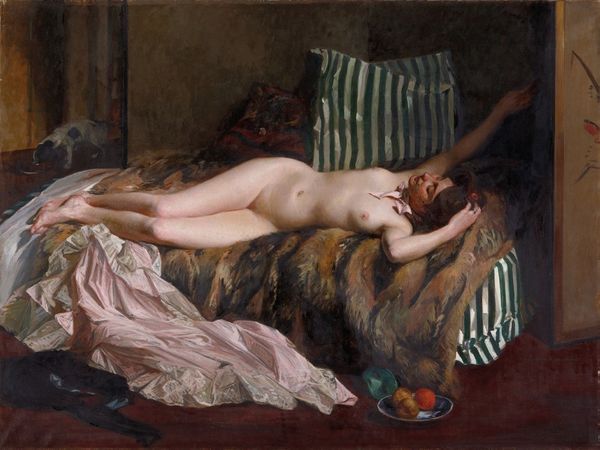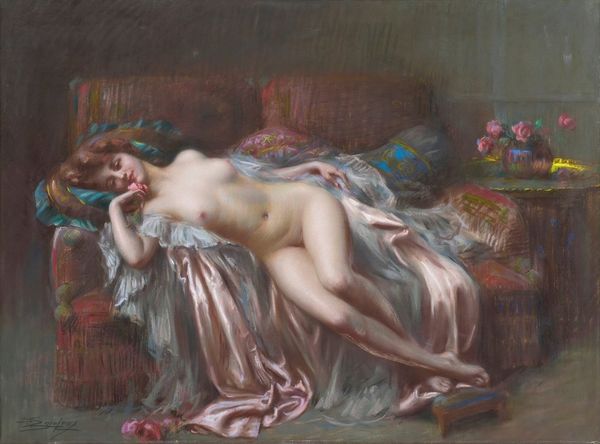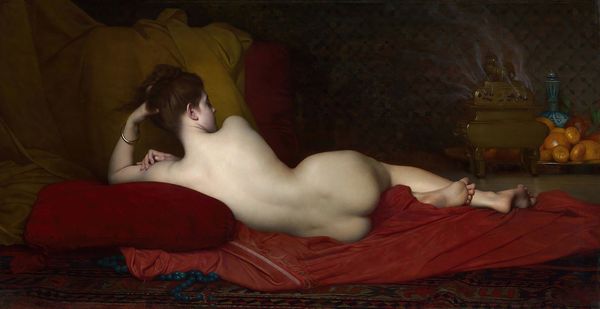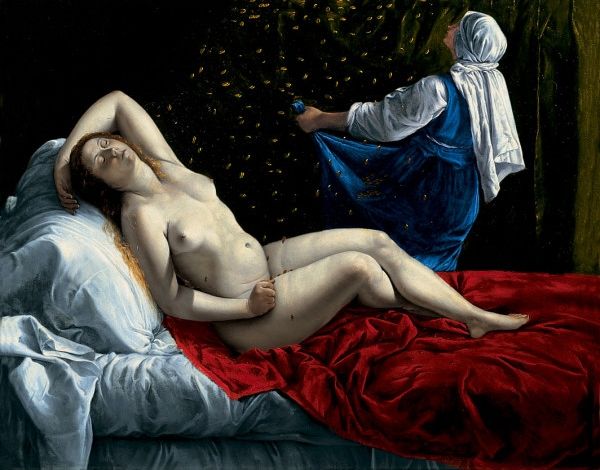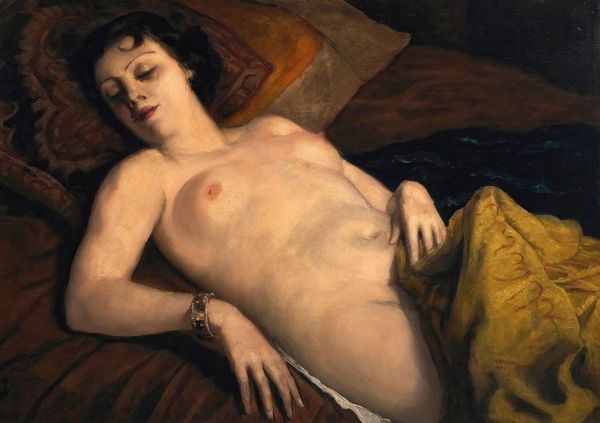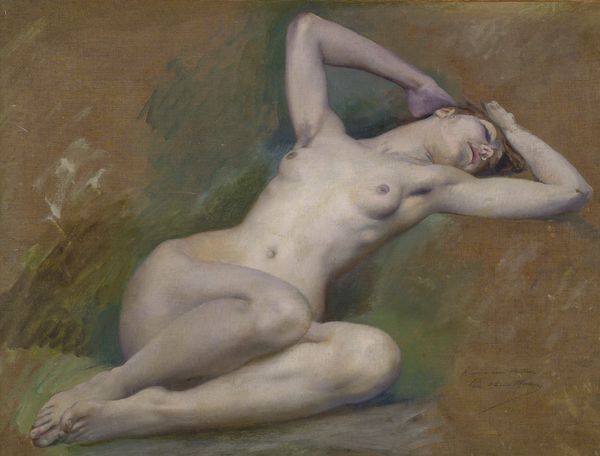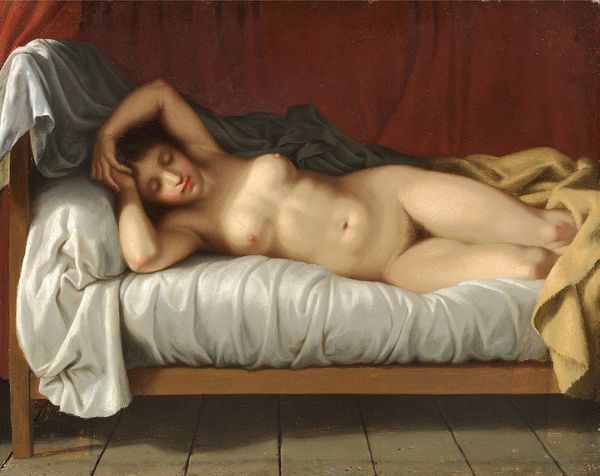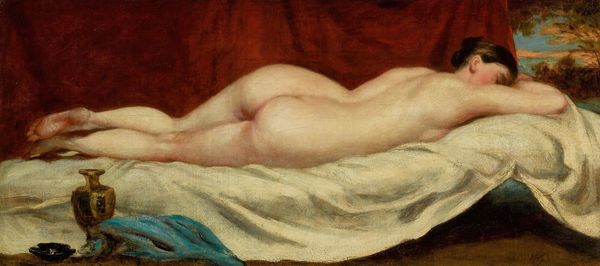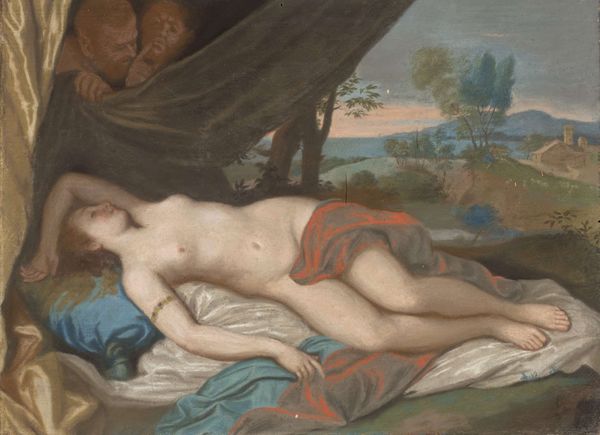
painting, oil-paint
#
portrait
#
baroque
#
painting
#
oil-paint
#
figuration
#
oil painting
#
female-nude
#
cupid
#
mythology
#
nude
#
erotic-art
Dimensions: 122.5 x 177 cm
Copyright: Public domain
Curator: Here we have Diego Velázquez's “The Rokeby Venus,” created around 1648, a celebrated painting currently residing here at the National Gallery in London. Editor: It's striking! There's such a delicate interplay between the cool blue of the drapery and the warmth of her skin. But there's a quiet melancholy to it that I can't quite place. Curator: Velázquez was working within the Spanish court, an environment bound by the conventions of the Counter-Reformation, making this nude mythological scene all the more significant, especially in its subtle defiance of those moral constraints. It challenges rigid ideologies concerning the female form. Editor: Precisely! Venus, the embodiment of beauty and desire. I'm drawn to the mirror, held by Cupid. It symbolizes vanity but also self-knowledge and truth, which links directly back to that enduring image of female objectification in art. What stories does it echo, repeat, or question about desire and self-perception? The apple offered by Venus and the mirror are also, historically, the archetypes of knowledge, in Christian and mythological art. Curator: That's an important point. Looking at this piece today, it's crucial to consider it within a tradition where male artists overwhelmingly dictated the representation of the female nude for a male gaze. Velazquez paints not from lustful possession but pensive contemplation. This painting invites dialogue on the historical power dynamics present in the creation and consumption of art. Editor: There's such ambiguity in her gaze, reflected in the mirror as it is; is it truly self-awareness or the mere absence of true recognition? Does she recognize who she is at the image in the mirror, in essence? This tension, in my eyes, is very modern. Curator: Definitely! I think its relevance today stems from its capacity to inspire introspection about art history’s often problematic treatment of gender, even within masterworks of undeniable beauty and technical mastery. Editor: Ultimately, "The Rokeby Venus," invites each viewer to become a co-conspirator in deciphering her timeless mysteries. Curator: Leaving us to confront what our gaze reveals about ourselves and the legacies we continue to perpetuate.

